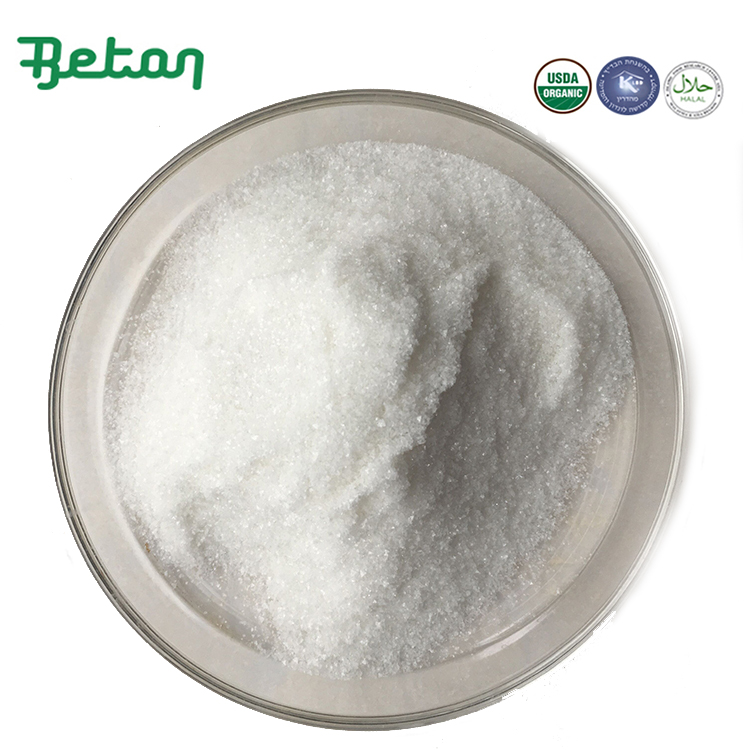-
Categories
-
Pharmaceutical Intermediates
-
Active Pharmaceutical Ingredients
-
Food Additives
- Industrial Coatings
- Agrochemicals
- Dyes and Pigments
- Surfactant
- Flavors and Fragrances
- Chemical Reagents
- Catalyst and Auxiliary
- Natural Products
- Inorganic Chemistry
-
Organic Chemistry
-
Biochemical Engineering
- Analytical Chemistry
- Cosmetic Ingredient
-
Pharmaceutical Intermediates
Promotion
ECHEMI Mall
Wholesale
Weekly Price
Exhibition
News
-
Trade Service
Many people like to knock off melon seeds in their free time
.
However, recently, there have been news reports that out of the 10 batches of unqualified food notifications issued by the Beijing Municipal Market Supervision and Administration Bureau, one batch of Qiaqia melon seeds (small and fragrant and creamy watermelon seeds) has been on the black list.
The unqualified items are Sulfur dioxide remains
.
It was precisely in the subsequent statement that the test method used in this test was faulty, and that the watermelon seeds themselves contained sulfur dioxide
.
.
However, recently, there have been news reports that out of the 10 batches of unqualified food notifications issued by the Beijing Municipal Market Supervision and Administration Bureau, one batch of Qiaqia melon seeds (small and fragrant and creamy watermelon seeds) has been on the black list.
The unqualified items are Sulfur dioxide remains
.
It was precisely in the subsequent statement that the test method used in this test was faulty, and that the watermelon seeds themselves contained sulfur dioxide
.
1.
Sulfur dioxide, which also exists naturally
Sulfur dioxide, which also exists naturally
When it comes to sulfur dioxide, the first thing many people think of is that it is a gas, and they will wonder why there is sulfur dioxide in the seeds we eat
.
.
In fact, many foods we eat naturally contain sulfur dioxide, and watermelon seeds are no exception
.
.
Watermelon seeds are a kind of plant
.
During the growth process, the sulfur dioxide in the atmosphere will enter the plant body through the leaf stomata of the plant body, and the bound sulfur dioxide in other soil or water will also enter the plant body through the absorption of the plant
.
The entering sulfur dioxide easily reacts with the aldehydes and ketone compounds in the plant, especially carbohydrates, to produce bound sulfurous acid.
Therefore, the plant has a certain amount of free and bound sulfur dioxide, and its content is comparable to that of air.
The degree of contamination still has a certain relationship
.
.
During the growth process, the sulfur dioxide in the atmosphere will enter the plant body through the leaf stomata of the plant body, and the bound sulfur dioxide in other soil or water will also enter the plant body through the absorption of the plant
.
The entering sulfur dioxide easily reacts with the aldehydes and ketone compounds in the plant, especially carbohydrates, to produce bound sulfurous acid.
Therefore, the plant has a certain amount of free and bound sulfur dioxide, and its content is comparable to that of air.
The degree of contamination still has a certain relationship
.
Moreover, during the growth and metabolism of melon seeds, the sulfur dioxide in the surrounding environment will enter the body in gaseous form through the respiration of melon seeds or combine with the soil in the form of acid rain to form bound sulfur dioxide and be absorbed into the body by the roots of the watermelon
.
In addition, the differences in varieties, cultivation methods and growth environment will also cause differences in the content of sulfur dioxide in the body
.
.
In addition, the differences in varieties, cultivation methods and growth environment will also cause differences in the content of sulfur dioxide in the body
.
Therefore, melon seeds contain a certain amount of sulfur dioxide, and its content is positively correlated with the content of sulfur dioxide in the environment.
We call the content of this substance contained in itself "background" content
.
We call the content of this substance contained in itself "background" content
.
2.
Sulfur dioxide, a commonly used food additive
Sulfur dioxide, a commonly used food additive
In addition to the natural occurrence, most people worry about the artificial addition of sulfur dioxide
.
.
In fact, sulfur dioxide is also a food additive in the food industry, and it is widely used
.
.
Sulfur dioxide can be used in many foods
.
For example, in the processing methods such as fruit, edible fungus, bamboo shoots, yam and other vegetables, such as fresh-keeping or peeling, cutting and other processing methods, they all take advantage of its antiseptic, sterilizing and fresh-keeping effects
.
Sulfur dioxide can also be used to protect the color of dried fruits and vegetables.
After sulfur fumigation, the appearance of colored dried fruits and vegetables can be bright
.
.
For example, in the processing methods such as fruit, edible fungus, bamboo shoots, yam and other vegetables, such as fresh-keeping or peeling, cutting and other processing methods, they all take advantage of its antiseptic, sterilizing and fresh-keeping effects
.
Sulfur dioxide can also be used to protect the color of dried fruits and vegetables.
After sulfur fumigation, the appearance of colored dried fruits and vegetables can be bright
.
However, sulfur dioxide, direct food applications, not all sulfur dioxide gas (inconvenient), or may be its analogs, including various conventional sulfite, pyrosulfite and the like
.
These substances can achieve functions similar to sulfur dioxide.
When calculating their content and usage, the content of sulfur dioxide is also used as a benchmark
.
.
These substances can achieve functions similar to sulfur dioxide.
When calculating their content and usage, the content of sulfur dioxide is also used as a benchmark
.
3.
Can sulfur dioxide be used in melon seeds?
Can sulfur dioxide be used in melon seeds?
Some reports claim that sulfur fumigation is used in the production process of melon seeds, so there will be residual sulfur dioxide
.
In fact, the Chinese standard does not allow the use of sulfur to smoke melon seeds
.
.
In fact, the Chinese standard does not allow the use of sulfur to smoke melon seeds
.
As for other sulfur dioxide food additives, the current national standard GB2760-2014 "Food Additives Standard Regulations", sulfur dioxide and its sulfites (including sodium sulfite, sodium metabisulfite, potassium metabisulfite, sodium bisulfite, sodium hyposulfite) can be used in fruits Dried, candied fruits, dried vegetables and other foods, but the use of sulfur dioxide in nuts and seeds products can only be used in canned nuts and seeds, no melon seeds
.
.
In general, sulfur dioxide is not allowed to be used in melon seeds
.
.
4.
Does this melon seed violate the regulations?
Does this melon seed violate the regulations?
So, does the melon seeds tested this time violate the regulations? It's actually hard to judge
.
.
Because the seeds themselves naturally contain some background sulfur dioxide
.
Therefore, to judge whether the product is in violation of the regulations, it is necessary to judge according to its background value, and remove the background value
.
If the background value is subtracted from the test result and it still exists, it means that this is probably a violation
.
.
Therefore, to judge whether the product is in violation of the regulations, it is necessary to judge according to its background value, and remove the background value
.
If the background value is subtracted from the test result and it still exists, it means that this is probably a violation
.
In fact, the sulfur dioxide residue detected in melon seeds this time is 0.
022g/kg, but we do not currently have the background value data of melon seeds, so it is difficult to accurately judge whether this melon seeds violates the regulations
.
022g/kg, but we do not currently have the background value data of melon seeds, so it is difficult to accurately judge whether this melon seeds violates the regulations
.
5.
Is there any harm if the sulfur dioxide exceeds the standard?
Is there any harm if the sulfur dioxide exceeds the standard?
In fact, generally not
.
.
The safe intake limit of sulfur dioxide established by the International Joint Expert Committee on Food Additives (JECFA) and the World Health Organization (WHO) is no more than 0.
7 mg per kilogram of body weight per day; for a 60 kg adult, this is equivalent to 42 mg per day
.
7 mg per kilogram of body weight per day; for a 60 kg adult, this is equivalent to 42 mg per day
.
The sulfur dioxide residue detected this time is 0.
022g/kg.
According to this amount, it takes about 1.
9kg of melon seeds a day to reach this safety level.
I think it is impossible for the average person to eat so much
.
022g/kg.
According to this amount, it takes about 1.
9kg of melon seeds a day to reach this safety level.
I think it is impossible for the average person to eat so much
.
Even if you really eat so many melon seeds every day and the melon seeds are so salty, the salt intake is much more harmful to you
.
You know, the sodium content in this milk-flavored melon seeds is also 122mg/100g
.
.
You know, the sodium content in this milk-flavored melon seeds is also 122mg/100g
.
Reference
[1]Hu Guixian, Lai Aiping, Yuan Yuwei, et al.
Cumulative risk assessment of sulfur dioxide residues in consumer diets[J].
Chinese Agricultural Sciences, 2017, 50(7): 1317-1325.
DOI:10.
3864/j.
issn.
0578 -1752.
2017.
07.
014.
Cumulative risk assessment of sulfur dioxide residues in consumer diets[J].
Chinese Agricultural Sciences, 2017, 50(7): 1317-1325.
DOI:10.
3864/j.
issn.
0578 -1752.
2017.
07.
014.
[2] Zhu Yutian, Peng Jianfei, Chen Shiyu, et al.
Research progress on the background value of endogenous chemical pollutants in food[J].
China Food Additives, 2015, (8): 149-153.
DOI:10.
3969/j.
issn.
1006-2513.
2015.
08.
018.
Research progress on the background value of endogenous chemical pollutants in food[J].
China Food Additives, 2015, (8): 149-153.
DOI:10.
3969/j.
issn.
1006-2513.
2015.
08.
018.
[3]Gu Yuxiang, Wang Dinglin, Chen Yufei.
Summary of food additives naturally occurring in food[J].
Journal of Food Safety and Quality Inspection, 2017, 8(6): 2312-2317.
Summary of food additives naturally occurring in food[J].
Journal of Food Safety and Quality Inspection, 2017, 8(6): 2312-2317.
[4]Du Yegang, Li Bifang, Deng Wujian, et al.
Background value analysis of chemical pollutants naturally occurring in food[J].
China Food Additives, 2013, (2): 165-168.
DOI:10.
3969/j.
issn.
1006 -2513.
2013.
02.
018.
Background value analysis of chemical pollutants naturally occurring in food[J].
China Food Additives, 2013, (2): 165-168.
DOI:10.
3969/j.
issn.
1006 -2513.
2013.
02.
018.







